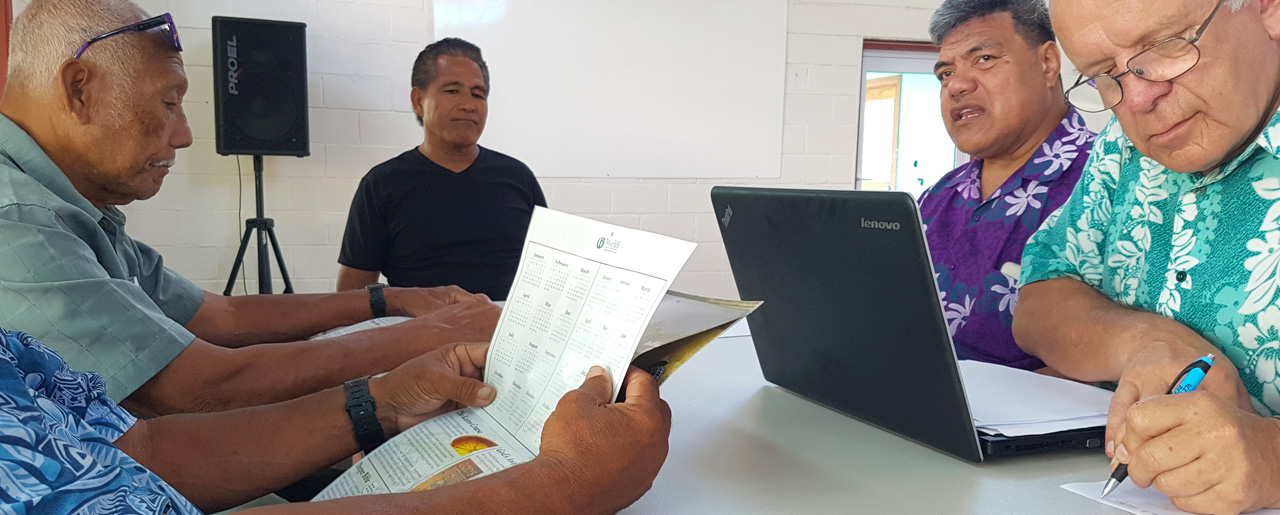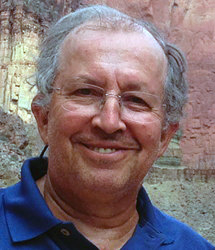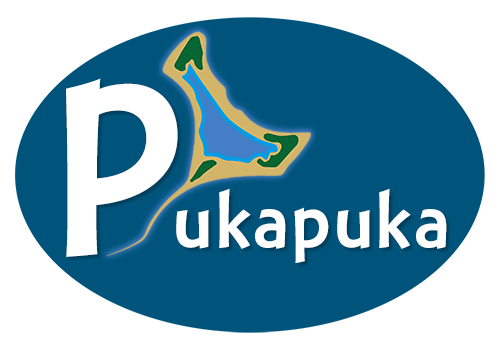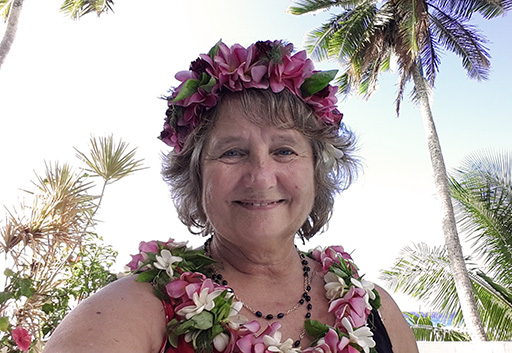
Te Pukamuna | Pukapuka Dictionary
About
Welcome to the dictionary of the indigenous language of Pukapuka! You can navigate the dictionary below, using the menu to toggle word and concept translations between the Pukapuka language and English, Rarotongan or the Northern Cook Island languages.
If you are really keen to learn the language of the Pukapuka people, you can download and read Māmā Mele’s Pukapukan Grammar thesis for free by clicking on Māmā Mele’s lovely picture. (Fair warning, the file is 34mb!)
The Pukapuka Dictionary
Dictionary Title
Te Puka Muna a Te Ulu o te Watu
A Dictionary of the Language of Pukapuka
Te Taka o te Puka Muna
Pukapuka Dictionary Project
Copyright © 2018, Te Wui Aliki o Pukapuka | All rights reserved
Publisher: Te Taka o te Puka Muna : Pukapuka Dictionary Project, Auckland New Zealand.
Contact: Kevin and Mary Salisbury
12 Royal Viking Way, Lynfield, Auckland 1042
Yāyākinga Talatala : Introduction
Kē ōla kōtou i nā yauyau nunui o te Matua Yā.
This dictionary of the indigenous language of Pukapuka (northern Cook Islands) draws from several sources.

Robert Borofsky
Of prime importance is the dictionary compiled and produced by the school teachers on Pukapuka, assisted by the American anthopologist, Robert Borofsky, during the years 1977-81 (Mataora et.al., 1981). This work had the great benefit of example sentences composed by native speakers. We pay tribute to all the teachers for their commitment to the task, meeting after school on several days each week. The leadership of Tukia Mataora and Mataora Tutai throughout that time was significant. The rest of the team included Kaututu Katoa, Tuiva Kalowia, Penese Poyila, Walewaoa Teingoa, Lavalua Tutai, Tiaki Wuatai and Waleeu Wuatai.

Earnest Beaglehole
For nine months in 1989 Kevin and Mary Salisbury worked with the school teachers on Pukapuka in developing and extending the range of the dictionary and discussing orthography issues. Kaututu Katoa assisted Mary in identifying cognates with other languages using a POLLEX printout (Biggs n.d.). This work was continued in Auckland, with assistance from Mataora Tutai and Karitua Makuare.
The first dictionary of the language of Pukapuka was compiled by Pearl Beaglehole, an American linguist, who was on the island for seven months in 1934-35 with her husband, Ernest Beaglehole (an anthropologist from New Zealand). Their dictionary manuscript was not published, and was left among their other research papers in the library of Victoria University, Wellington. The Salisburys located the typescript in 1991 and edited it for publication at the University of Auckland. Many words from the Beagleholes’ dictionary have been included in this edition.
Particular attention has been given to the terms for fauna and flora (animals and plants). The Beagleholes collected 240 fish names, as well as those for all the birds, plants and sea creatures. In 1989 Kevin worked with Mataora Tutai and Walewaoa Teingoa, and together with the men of Loto village, they identified another 40 or so fish names. The work of confirming the precise species that the names referred to, including their scientific names in Latin, was continued in Auckland with the help of Mataora Tutai and Paleula Katoa. Then in February 2004 a biodiversity workshop funded by United Nations Development Program was held on Pukapuka. Led by Gerald McCormack (Cook Islands Natural Heritage Trust) and assisted by the Salisburys, the adult population of the island had the chance to confirm the identification of species. The culmination of this collaborative work, including pictures, can be seen in this online version of the Pukapuka Dictionary [https://pukapuka.world/dictionary], and also in the Cook Islands Biodiversity database [http://cookislands.bishopmuseum.org]. The latter database has been the source for indigenous names from other Cook Islands languages for species included in this dictionary.
Other reference works that have influenced this edition of the dictionary are Mary Salisbury’s Doctoral Dissertation, A Grammar of Pukapukan (University of Auckland, 2003 – downloadable by clicking on Mary’s photo above) and Kevin Salisbury’s large collection of traditional chants (available on our Muli-tuluma page). Kevin has also spent considerable time adding synonyms and antonyms, etymological information from POLLEX (see Abbreviations), as well as codes for Semantic Domains to create a thesaurus (a word list grouped according to topics). These are particularly useful in learning a language, and readers are urged to look at the online version of the Pukapuka dictionary below, and click on “Categories”.
Great appreciation must be expressed to Karen Buseman of SIL International, Iowa, USA, for her expertise in creating and formatting the output from the Toolbox Multilingual Dictionary Format and formatting the dictionary in its present form.
Like all dictionaries, this is still a work in progress. There are still many words that can be added, and plans are underway to involve communities in this process.
Again, to everyone who has played a part in building this dictionary, may we say,
Atawai wolo yē maneke. Nōnō ai kōtou wakalelei.
Kevin and Mary Salisbury
Auckland, August 2018
References & Abbreviations
References:
Beaglehole, Ernest & Pearl Beaglehole, 1938. The Ethnology of Pukapuka. Bulletin 150, Honolulu: Bernice P. Bishop Museum.
Beaglehole, Ernest & Pearl Beaglehole, 1991. Pukapukan Dictionary Manuscript. (Edited by Kevin and Mary Salisbury, Pukapuka Dictionary Project, University of Auckland.)
Biggs, Bruce, n.d. Polynesian Lexicon Project (POLLEX) printout, University of Auckland.
Greenhill, SJ & Clark Ross, 2011. POLLEX-Online: The Polynesian Lexicon Project Online. [https://pollex.shh.mpg.de/]
Mataora, Tukia, Mataora Tutai, Rob Borofsky et al. 1981. Pukapuka–English Dictionary: A preliminary edition [photocopied typescript].
Salisbury, Mary, 2003. A Grammar of Pukapukan. Unpublished Doctoral Dissertation, University of Auckland.
Abbreviations:
Bibl. — Biblical (Te Bibilia Tapu, 1888, Bible Society of the South Pacific)
Gk. — Greek
Heb. — Hebrew
Rar. — Rarotongan (Cook Islands Māori)
Mn-Rk. — Manihiki-Rakahanga
Pen. — Penrhyn (Tongareva)
PB — Pearl Beaglehole’s dictionary manuscript
Tah. — Tahitian
The etymology of words is enclosed in square brackets at the end of an entry, showing a proto-form for a word; that is, how it is believed to have existed at an earlier historical period. Proto languages are languages that are understood to have been spoken at various stages in the development of the Austronesian language family, such as Austronesian (AN), Malayo-Polynesian (MP), Oceanic (OC), Remote Oceanic (RO), Eastern Oceanic (EO), Central Pacific (CP), Polynesian (PN), Nuclear Polynesian (NP), Samoic -Outlier (SO), East Polynesian (EP), Central Eastern Polynesian (CE), Tahitic (TA) and Cookic (CK). In general the spelling of these reconstructions reflects how the words would have been pronounced at the Proto Polynesian stage, or in a later subgroup of Polynesian.
Grammatical Abbreviations:
abbrev. abbreviation
adv. — adverb (qualifies a verb in manner, time or place)
conj. — conjunction
excl. — exclamation
expr. — expression
freq. — frequentative (occurring often, habitual or
interj. — interjection
lit. — literally
n. — noun
neg. — negative
num. — numeral
Opp. — opposite (used for antonyms: words of opposite meaning)
part. — particle
pers. — personal
pl. — plural (more than one)
poss. — possessive
prep. — preposition
pro. — pronoun
Syn. — synonym
TAM — tense-aspect marker
v. — verb
v.i. — intransitive verb
v.t. — transitive verb

